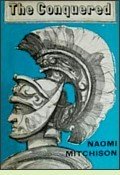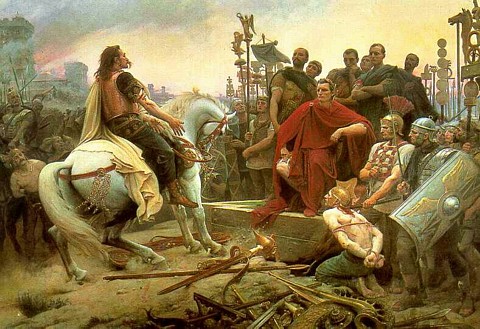|
The Conqueredby Naomi MitchisonReviewed by Annis By 57 BC it is clear to the Gauls that by asking the Romans for aid against their old enemies the Germans, they had unwittingly invited the fox into the henhouse in the form of ambitious Roman general Julius Caesar. Fearing annexation, the Veneti, a seafaring tribe from coastal Brittany, capture several Roman officers as hostages: insurance, they hope, against Roman aggression. One such captive is Titus Veturius Barrus, imprisoned in the household of Veneti chieftain Kormiac the Wolf. There Titus encounters the chieftain's son, Meromic, with whom his life will become inextricably entangled. Caesar's response to the Veneti is swift and brutal. Following their defeat Meromic is sent as a slave to Rome, where he is cruelly treated. While at home on leave Titus recognises and rescues Meromic, who becomes not just his slave, but his liege-man and companion throughout the doomed campaign of Gallic king Vercingetorix against Caesar's forces. Although bonds of love and gratitude tie Meromic to his rescuer, these conflict with his loyalty to the Gallic cause. Repeatedly, he runs away to join his fellow Gauls, but is always drawn back to Titus, who never truly understands Meromic's bitter desperation. No matter how settled Meromic eventually seems in the role of Titus's devoted retainer, at heart he remains a caged wolf. A vivid, haunting story with just a touch of Celtic mysticism and a poignant ending, The Conquered explores the alienation from the self wrought on the individual psyche by conquest and colonialism, a subject to which Mitchison was particularly drawn. The epigraph states her case. Victrix causa diis placuit sed victa puellis: The victor's cause may please the gods, but young women favour the cause of the conquered. (1923, 320 pages) More about The Conquered at Powell's Books
Druids by Morgan Llywelyn (1992). More info
The Gallic War by Julius Caesar (1917 translation by H.J. Edwards); unlike modern translators of this work, Edwards retained Caesar's references to himself in the third person rather than converting them to first person; Caesar wrote this as propaganda and it remains a breathtakingly readable account of his campaigns in Gaul. More info Caesar Against the Celts by Ramon L. Jimenez (1995). More info
Gendering Classicism: the Ancient World in Twentieth-Century Women's Historical Fiction by Ruth Hoberman (1997). More info
The Roman Conquest of Gaul at the Heritage History website Wikipedia article on the Veneti In her memoirs, the remarkable Mitchison wryly commented, “It's always a bore being ahead of one's time.” She could well empathize with the plight of those tied to a society but alienated from it in spirit, a recurrent theme in her work. See the Wikipedia entry on Naomi Mitchison for more about her life. Back to Novels of Ancient History
|

